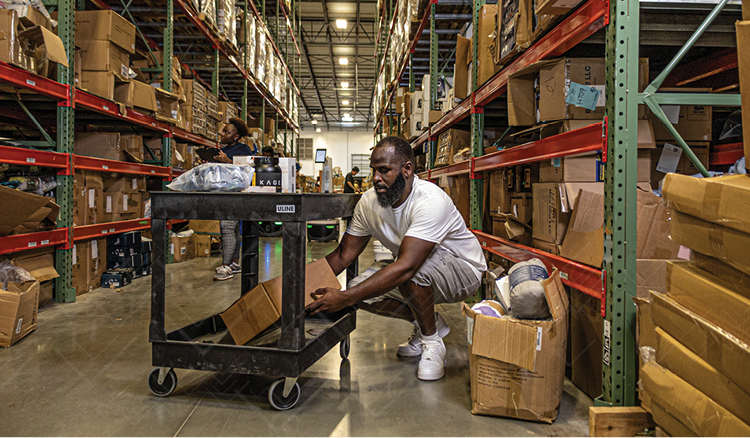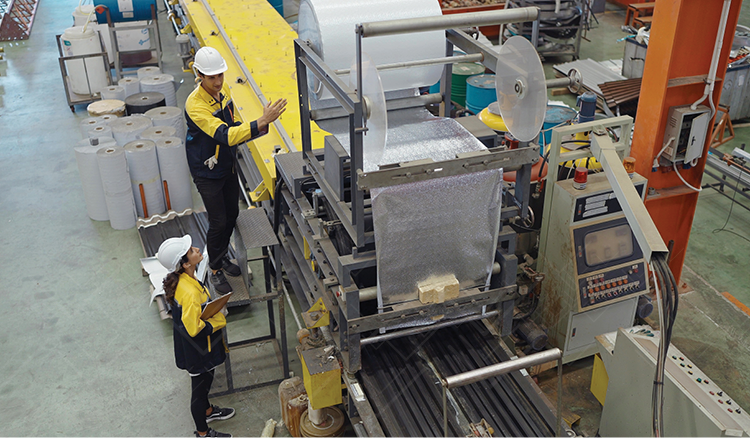The Future of Manufacturing: Asset-Light Manufacturing
The future of manufacturing is localized, agile, asset-light, and focused on customization to meet each customer’s preference.
Asset-light manufacturing is a key part of this equation, albeit one that requires the establishment of other aspects of the future of manufacturing to function. We will discuss asset-light manufacturing’s future state, which is distinct from what people typically mean today when they use asset-light to describe offshoring and outsourcing.
This article is part three of a series called “The Future of Manufacturing,” in which we’ll explore the technologies and ideas that will be used in the next manufacturing revolution. We will share a high-level view of these technologies and concepts, acknowledging that these articles are just a starting point for your journey to a deep understanding of each technology and idea.
In this article, you’ll learn what asset-light looks like today, what its ideal future state would be, and how to reach a truly asset-light future for manufacturing.
What is Asset-Light Manufacturing?
Currently, asset-light manufacturing operations typically means that most of the work has been outsourced elsewhere. This could be overseas or it could mean the company does not actually manufacture anything, but focuses on branding and distribution of white-label solutions.
Outsourcing and offshoring are not the right paths to success in the future of manufacturing. The total landed cost of offshoring is higher than that of local production, and outsourcing work to other countries weakens the local economy and shrinks the middle class. We have already seen the disastrous impacts of having a supply chain that is spread too thinly across the globe.
Enabling the right type of asset-light manufacturing as the norm will require flexible and reliable offerings from firms across the marketplace, which would alleviate the need for risk avoidance strategies such as vertical integration.
In the ideal future state, a more modular approach to production which relies heavily on additive manufacturing will create a localized process made up of many firms performing the discrete actions required to produce each custom order from customers.
Instead of each company having to purchase specialized machinery for each process step, they can simply source the modular parts they need locally, quickly supply modified design files as necessary, and use additive manufacturing to apply their own intellectual property to finish the customized product. In this way, they will be able to focus more on IP and customer relationships and less on vertical integration, because the need for that will be made obsolete by the superior responsiveness of the local supply chain.
Pros of Asset-Light Manufacturing
- Asset-light companies outperform asset-heavy peers
- Operational flexibility
- Improved capital allocation for research and development
- Lower upfront capex
- Lower fixed costs
- Improved ability to respond to demand
Cons of Asset-Light Manufacturing
- Initial hurdles due to supplier rigidity
- Requires adoption of new business practices
- Less control of supply chain due to moving away from vertical integration
What You Should Know Before Adopting Asset-Light Manufacturing
Adopting asset-light manufacturing should not be about outsourcing. Most people mean outsourcing when they say asset-light, but we mean running a lean operation within your four walls that has the ability to respond to customer demand in real time.
To adopt the asset-light manufacturing of the future, you will need:
- Local supplier network
- Additive manufacturing technology
- Flexible suppliers and supply chain partners
- Flexible labor capacity
You should know that the type of asset-light manufacturing we are advocating for will not be truly possible without additive manufacturing and localized, decentralized manufacturing. Under those circumstances, a local company could use local suppliers of the parts it needs, then use additive manufacturing to complete the customized order. This would require less assets than the traditional route of offshoring production, buying warehousing space to manage the inefficiencies, and potentially integrating vertically into distribution to reduce lead times.
How to Ease the Transition to Asset-Light Manufacturing
Transitioning to asset-light manufacturing will require you to have suppliers who fit your new model. This is where virtual marketplaces come into play.
If you began transitioning to asset-light manufacturing today, you could already use a company providing on-demand additive manufacturing like Xometry (or its competitors) to source parts. This would enable you to begin building processes around your more flexible model and make improvements as you scale this initiative.
Another way to reduce friction in the scaling-up phase is by moving the fixed cost of acquiring new machinery to an operational cost. To do this, you can use a machine-as-a-service platform like SteamChain to lower the upfront cost of machinery as you make the transition to an asset-light model which utilizes additive manufacturing.
How Flexible Labor Capacity Enables Asset-Light Manufacturing
Of course a company providing an on-demand labor marketplace cannot leave out the impact of flexible labor capacity on asset-light manufacturing.
Flexible labor capacity is the secret sauce for making a successful asset-light strategy. If your company can respond to demand in real time, you need less space for inventory and less machines because you can achieve better utilization of your assets.
To read more on this topic, check out our most recent article: Asset Light : How "As-a-Service" Unlocks Growth & Eliminates Waste
Previous Posts
How Policy Constraints, Not Just Production Bottlenecks, Threaten Your Bottom Line
The Future of Manufacturing and Logistics
Create a free business profile today to explore our platform.






